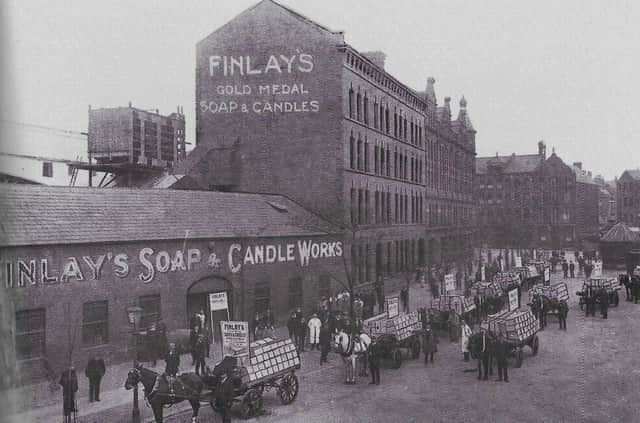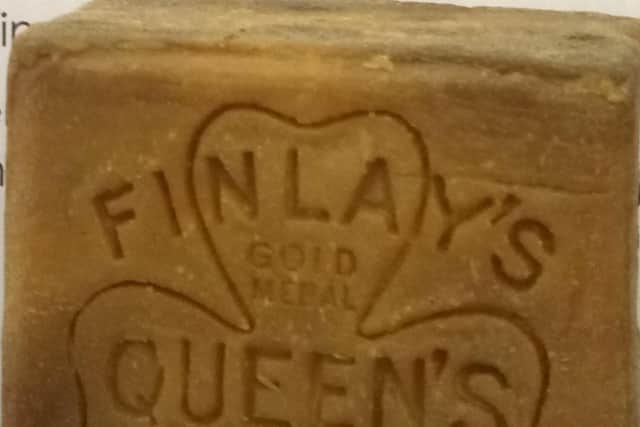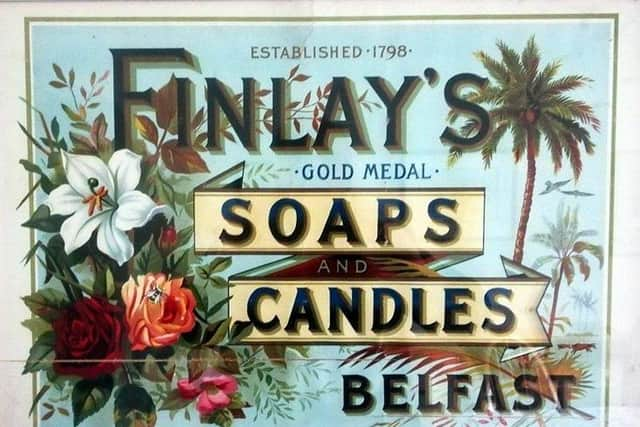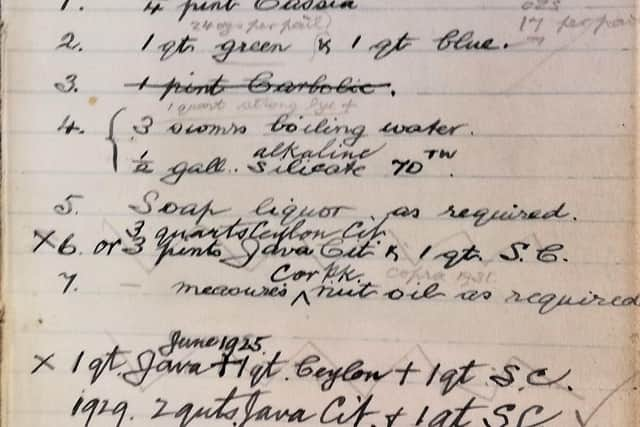Soap and lather is definitely the best medicine, now and yesteryear


A Harland and Wolff shipyard worker explained the procedure “they just builds ‘em and shoves ‘em in!”
It wasn’t quite as simple as that, a thought that crossed my mind whilst surveying the mass-exodus of soap and hand sanitisers (and household items with other roles!) from our supermarket shelves!
Advertisement
Hide AdAdvertisement
Hide AdBecause in days of yore, after a ship had been launched, shipyard-workers rushed to the slipways to commandeer leftover soap used for lubricating the keel.


Titanic’s slipway was greased with over 20 tons of tallow, train oil and soap, a slippery concoction that aided her approximately 24,000-ton, 880-feet-long hull to slide into the Lagan on the May 31 1911.
It took a mere 62 seconds “as though she were eager for the baptism” the News Letter recounted.
Then tugboats towed her to the fitting-out wharf where her total weight was virtually doubled with engines, boilers and numerous other nautical necessities.
Advertisement
Hide AdAdvertisement
Hide AdIn his White Star Line archive historian Paul Louden-Brown describes the slippery gunge on Titanic’s slipway looking like a coating of ice.


“Tallow was rendered beef or mutton fat. Train oil, actually oil from the sperm whale, was considered the finest lubricant available. Soft soap was added to help the animal fat and whale oil blend together. The resulting mixture, off-white in colour, was applied to the launch ways.”
The residual soap was brought home by the shipyard workers and if they sang ‘Happy Birthday’ whilst washing their hands it was probably in celebration of Titanic’s safe delivery onto the Lagan!
Soap was more plentiful then than now.
The Irish Historic Towns Atlas’s first mention of a ‘soap boiling house’ was in 1712, in Belfast’s Waring Street.


Advertisement
Hide AdAdvertisement
Hide AdAccording to the News Letter of April 20 1753 Brice Smith owned a similar establishment on Peter’s Hill off the Shankill Road.
Alexander Wallane opened a soap and tallow factory in Church Lane in 1755 and William Stewart commenced business in another one in Donegall Street in 1758.
Thereafter there were six soap makers in Ann Street, three in Castle Street, six in High Street, eleven in North Street, two in Royal Avenue, and half a dozen others further from the centre of town.
I’ve left one of the oldest soap makers till the end - Alexander Finlay Ltd - hailed as “the largest in Ireland”.
Advertisement
Hide AdAdvertisement
Hide AdCo-incidentally, one of the Finlays lived in Holywood, County Down, and is well-recounted in a book called ‘Holywood People’, which I’ve quoted before (about John
Getty McGee’s ulster overcoat) and I’m reliant on it again today.
Archie Finlay was the youngest son of Alexander Finlay and Matilda Carson of Walmer Terrace, Holywood.
It was the grandfather of Alexander Finlay (also Alexander) who had begun the soap-making business in 1798.
Advertisement
Hide AdAdvertisement
Hide AdA stick of shaving soap made in that year was exhibited in London and is still owned by the family.
The business started as soap boilers at Hanover Quay (later Custom House Quay) in Belfast, soon moving to High Street, then to Ann Street and later to Victoria Square where it remained until it closed.
The business also expanded to make candles and glycerine, with bone-meal as a by-product.
It became a limited liability company - Alexander Finlay Ltd - about 1905.
Advertisement
Hide AdAdvertisement
Hide AdArchie Finlay and his brothers Herbert and Robert, together with his nephew Alexander Hugh (Alec) Finlay, managed the soap-making business in its later years until it finally closed in 1949.
The company made a wide range, including industrial soap for bleachers, finishers, laundries and silk and woollen manufacturers.
Pure Curd white soap was excellent for washing muslin, while Pine Tar soap was effective against skin complaints, and the Paraffin soap was used as a strong detergent.
In later years Queen’s Pale, Silkstone and Nimrod soaps were the most widely used domestic soaps.
Advertisement
Hide AdAdvertisement
Hide AdFinlay’s candles were mostly for domestic use but they also made a special type of candle for Harland and Wolff where they were used while working on ships’ hulls, before electric lighting became available.
Alexander Finlay (father of Archie) moved to Holywood when he married Matilda Carson in 1858.
They bought their house (called Willesden) from John R Neill who had built it a few years previously.
Willesden was located on the corner of Demesne Road and Church Road and was demolished at the end of the last century.
Advertisement
Hide AdAdvertisement
Hide AdThere was a polished granite block in its grounds, designed and erected by Archie Finlay who was a mathematician.
The stone was engraved with a mathematical formula - ‘the perfect square’ - also reproduced on the back of the family headstone in Holywood’s Priory graveyard.
In his retirement Archie Finlay was a keen walker, often to be seen around Holywood.
He always carried a bag of sweets in his pocket and presented a sweet to each young child he met.
‘Holywood People’ by the Holywood District U3A History Group is available at the town’s Stewart Miller bookshop or online at Colourpoint.
Comment Guidelines
National World encourages reader discussion on our stories. User feedback, insights and back-and-forth exchanges add a rich layer of context to reporting. Please review our Community Guidelines before commenting.